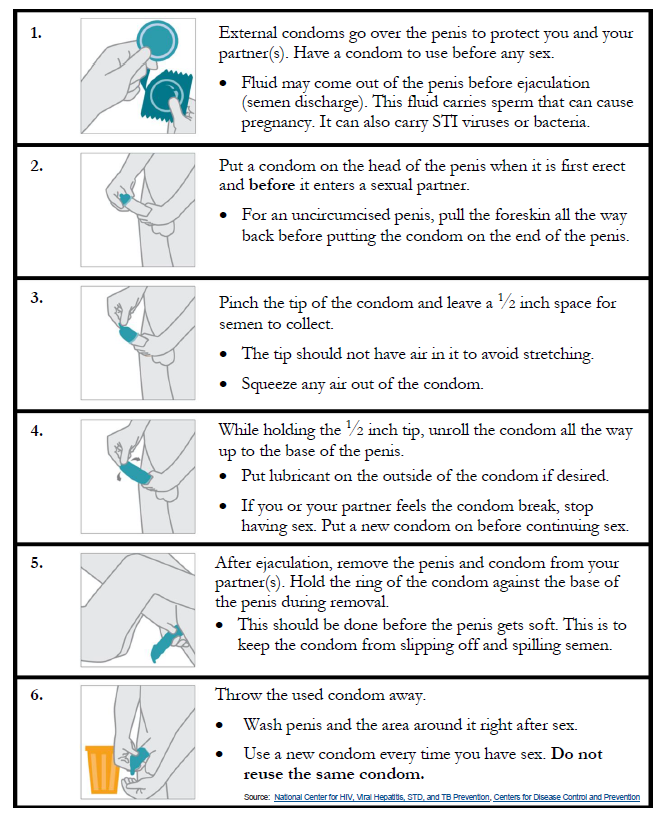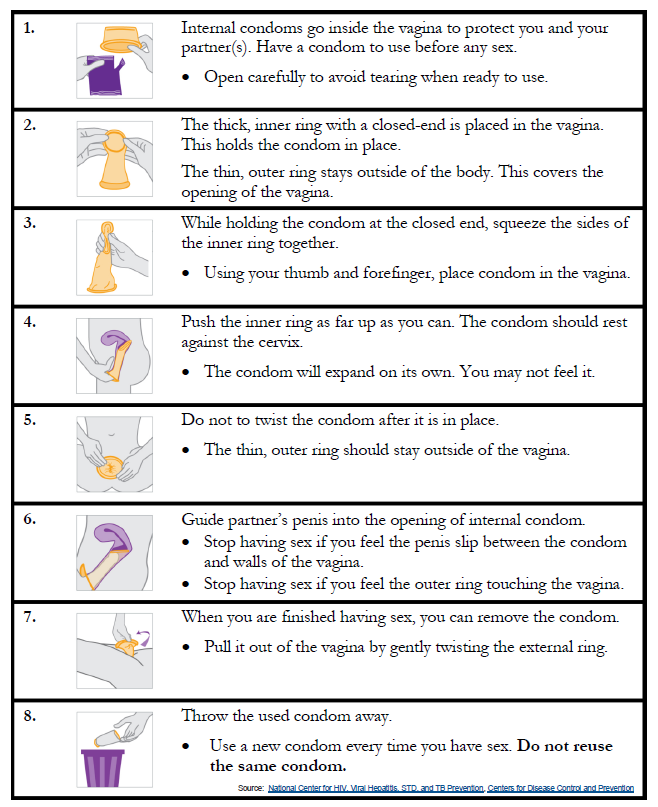Condoms
Condoms should be used while having sex. They help prevent the spread of sexually transmitted infections (STIs) and reduce the risk of pregnancy. Some STIs that condoms help protect against are genital herpes, gonorrhea, chlamydia, trichomonas, hepatitis B, hepatitis C, and HIV/AIDS. Condoms keep genitals (penis and vagina) and fluids from touching a sexual partner. There are two types of condoms – external and internal.
Getting Condoms
You can get condoms at:
- drug store
- vending machine
- family planning clinic
When choosing condoms check their expiration date. Make sure the condoms you use are:
- latex
- labeled to prevent diseases
- not exposed to heat or sunlight
Safety
- Use latex condoms unless you have a latex allergy. Use polyurethane (latex-free) condoms if you are allergic to latex.
- Do not use 2 condoms at the same time. This means not 2 male condoms or a combination of male and female condoms.
- Condoms can last up to 2 years if kept in a cool, dry place.
- Do not keep condoms in your car or wallet. Both of these can expose the condom to heat. Heat weakens condoms and makes them less effective.
Lubrication
- Lubricants, or “lube,” are liquids or gels that prevent friction during sex. Friction can cause condoms to break. This can lead to STI exposure or pregnancy.
- Do not use Vaseline®, petroleum jelly, hair oil, or baby oil on condoms. These can make the condom break. Use water-based or silicone-based lubrication. You can buy condoms that are already lubricated.
External Condom
The external condom, or male condom, is placed over an erect penis.
Internal Condom
The internal condom, or female condom, is placed inside a vagina.
HH-IV-46 ©1979, Revised 2021, Nationwide Children’s Hospital



